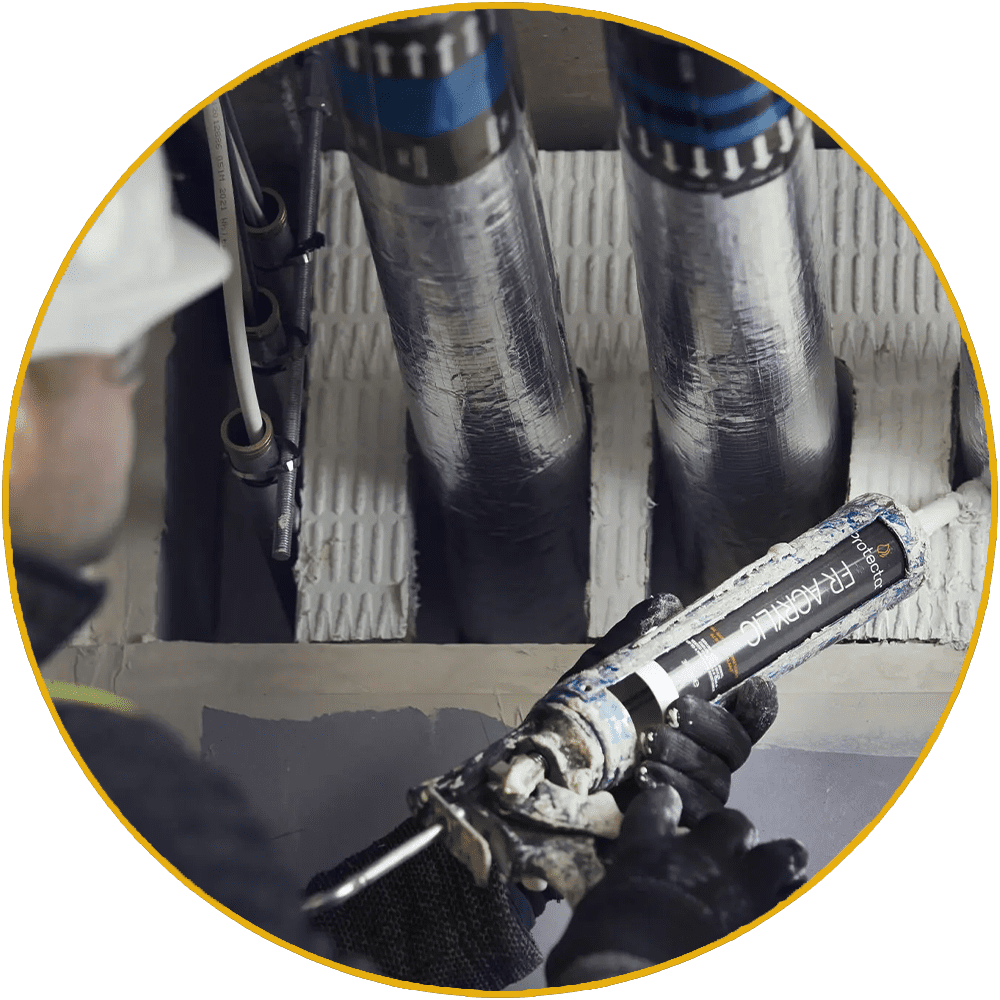Understanding Passive Fire Protection
Written by James Reid
Introduction
When we think about fire safety, we often imagine alarms sounding or water pouring from sprinklers. But there’s another, quieter layer of defence built into a building’s structure — one that works silently in the background to protect lives and limit damage. This is Passive Fire Protection (PFP).
At Gunfire, we’ve been protecting buildings and the people inside them for over 25 years. Here’s why PFP matters:
What is Passive Fire Protection?
Passive Fire Protection is a set of fire safety measures built into a building’s design to help contain fire and smoke. Unlike active systems like sprinklers or alarms that need someone or something to trigger them, PFP works automatically. It gives people more time to escape the building safely and helps protect the building’s structure from collapsing.
Fire doors, cavity barriers, linear gap seals, and fire stopping systems are core elements of passive fire protection, designed to seal gaps and penetrations in walls, floors, and ceilings. By maintaining effective fire compartments and preventing the spread of fire and smoke, these systems can make the difference between a minor incident and a devastating fire.
Key Elements of Passive Fire Protection
1. Fire Doors: Stopping Fire in Its Tracks
Fire doors are crucial. They’re specially designed to resist fire and smoke, usually for 30, 60, or even 120 minutes, depending on the fire strategy. You’ll find them in corridors, stairwells, and other areas where they help slow the spread of fire.
We don’t just install fire doors — we maintain, inspect, and certify them too. A fire door is only effective if it’s in good condition and kept closed (when not in use) , so regular checks are essential.
2. Cavity Barriers: Preventing Fire Spread Through Gaps
Modern buildings often include voids between floors, walls, or ceilings which are handy to allow ventilation, but dangerous in a fire. These voids can quickly become channels for fire and smoke to spread, which is where cavity barriers come in.
Cavity barriers block these hidden highways. Made from high-performance fire-resistant materials, they help stop flames from spreading through unseen spaces. Cavity barriers help protect the structural integrity of a building.
3. Fire Stopping: Sealing the Weak Spots
Fire stopping is a critical aspect of PFP. Every pipe, cable, or duct that passes through a fire-rated wall or floor is a potential weak spot. Fire stopping is all about sealing those gaps to make sure fire (and smoke) can’t sneak through.
We use various firestopping materials, including fire-resistant sealants and boards, to ensure that these vulnerable areas are properly sealed. This helps prevent fire from bypassing fire-resistant barriers and compromising the building’s safety.
4. Compartmentation Surveys: Keeping Fire Contained
Compartmentation involves dividing a building into fire-resistant sections to contain the spread of fire and smoke. Over time, the integrity of these compartments can be compromised due to building modifications or damage to fire-resistant barriers. Compartmentation surveys enable us to identify any damage, missing seals, or weaknesses so they can be effectively remediated ensuring the building is compliant and its inhabitants protected.
Why is Passive Fire Protection So Important?
Passive Fire Protection isn’t just about ticking boxes — it saves lives. With evolving fire safety regulations, especially after the introduction of the Building Safety Act 2022, building owners have a duty to get it right.
Conclusion:
Passive Fire Protection is an essential part of a building’s overall fire safety strategy. From fire door installations and maintenance to cavity barriers, fire stopping, and compartmentation surveys, we offer a wide range of PFP solutions that ensure your building remains compliant and safe.
In today’s world, it’s no longer enough to simply meet the minimum fire safety regulations. Our expertise and commitment to quality guarantee the best PFP solutions, protecting people, property, and providing peace of mind.
For more information on how to keep your building safe, check out our
service page for a full breakdown of what we offer.




